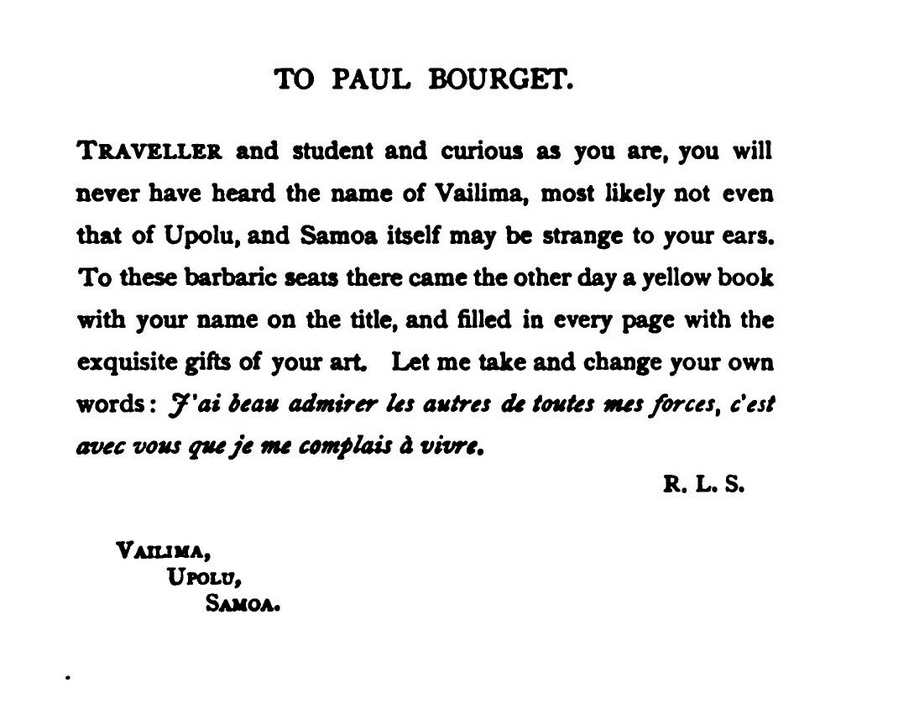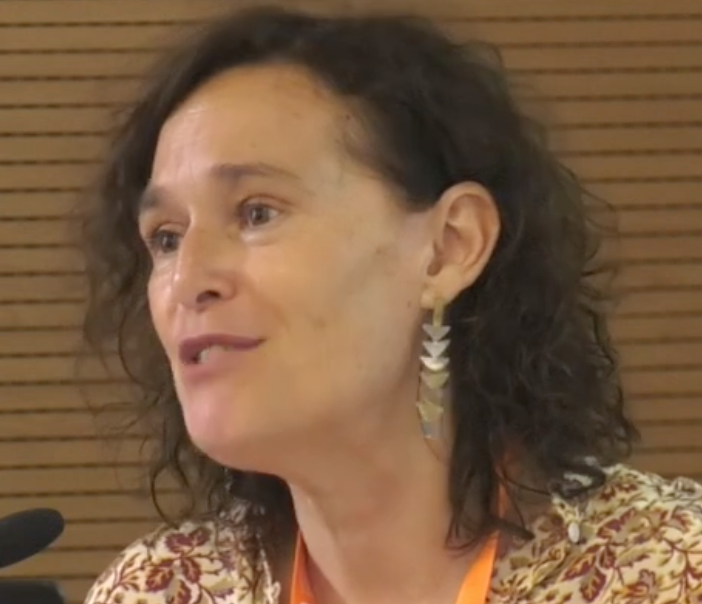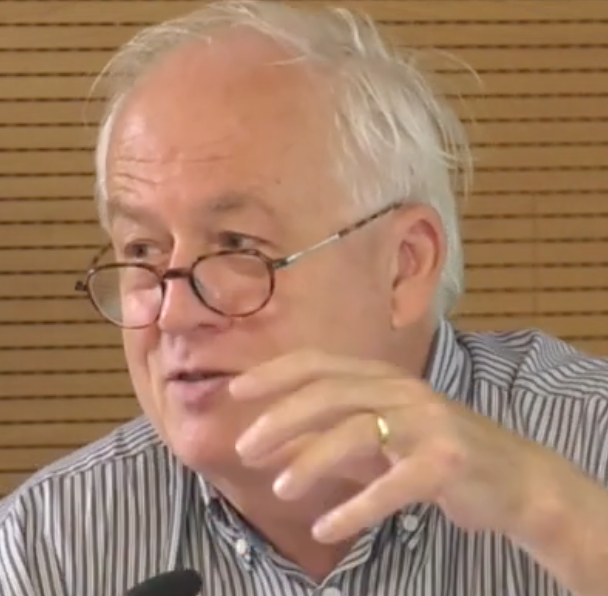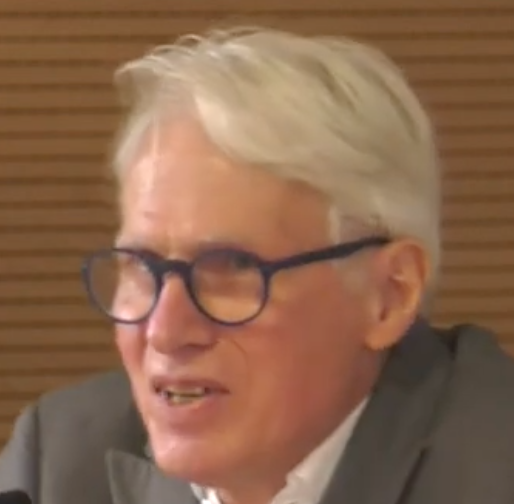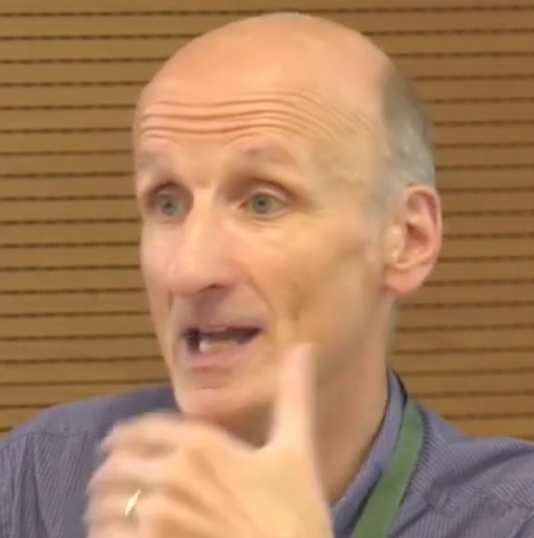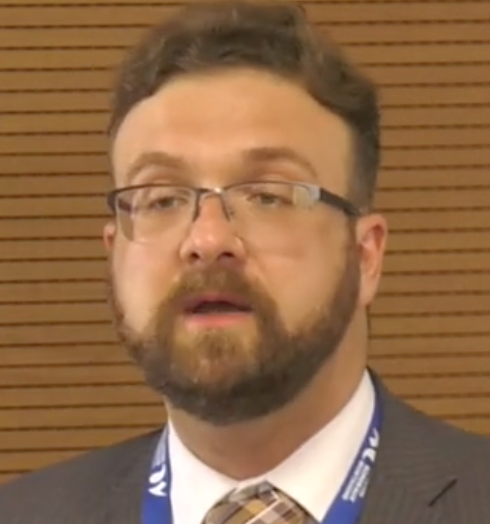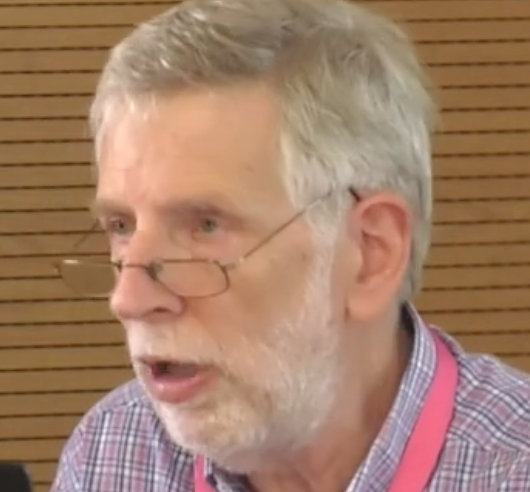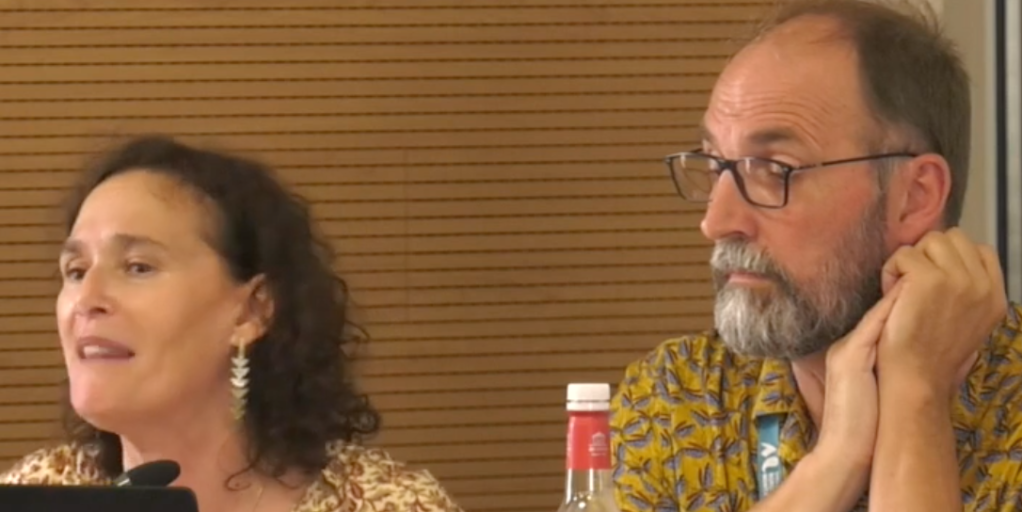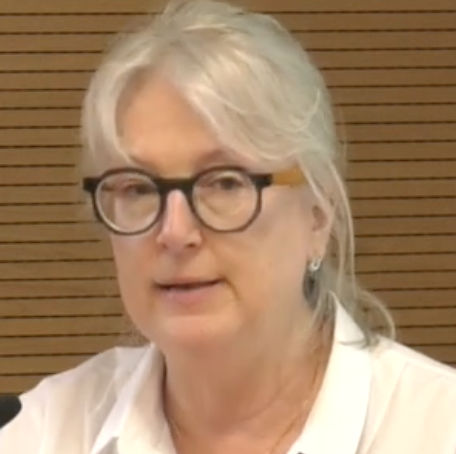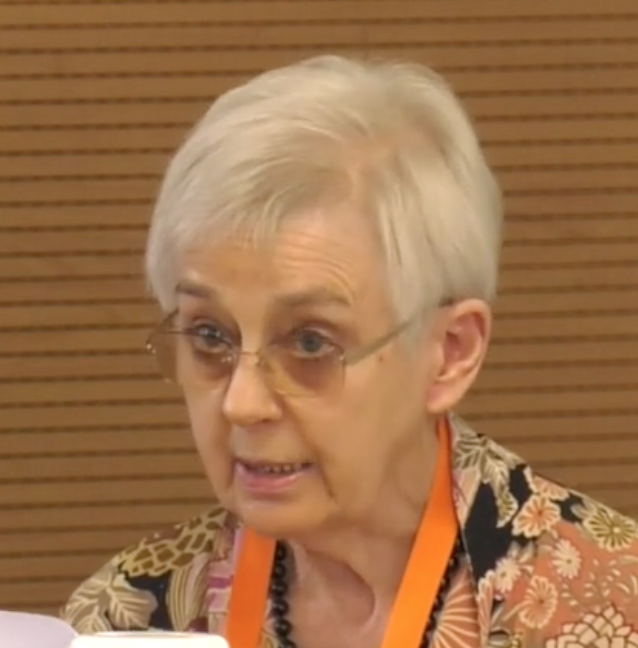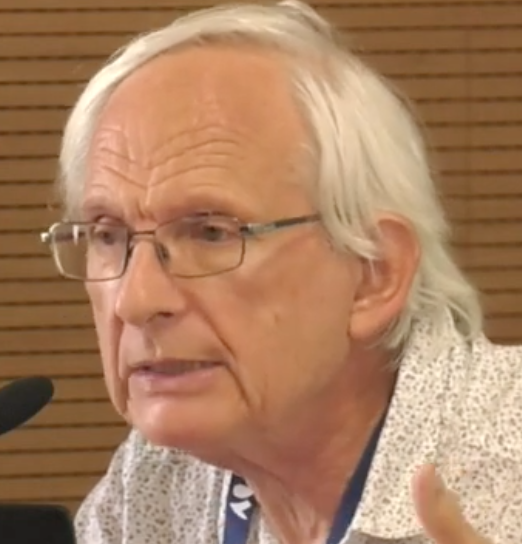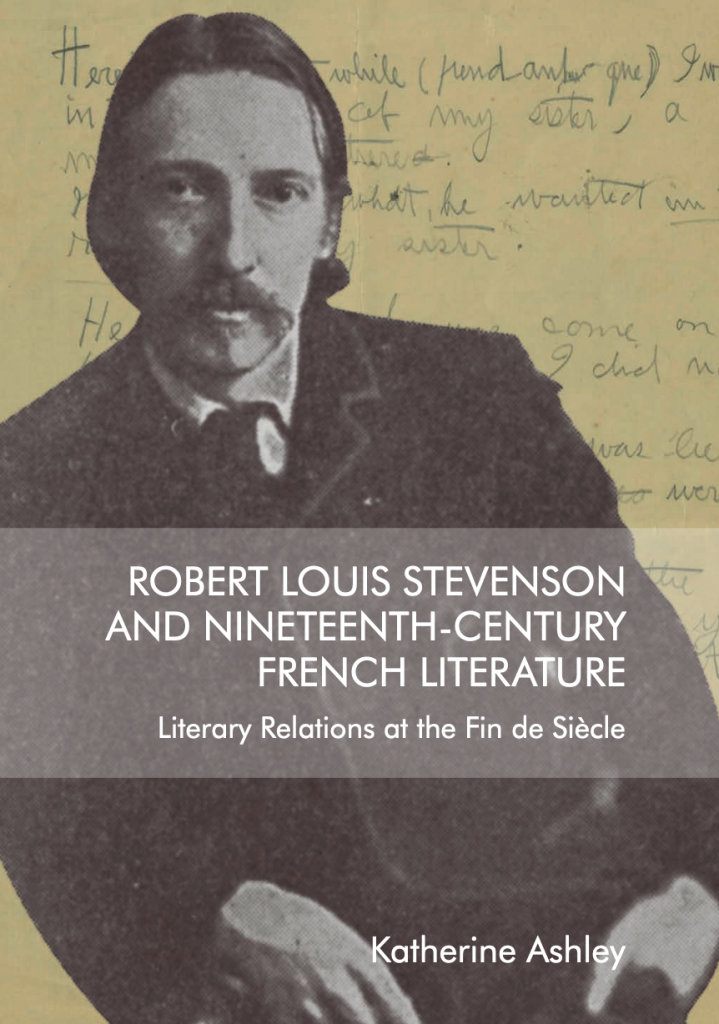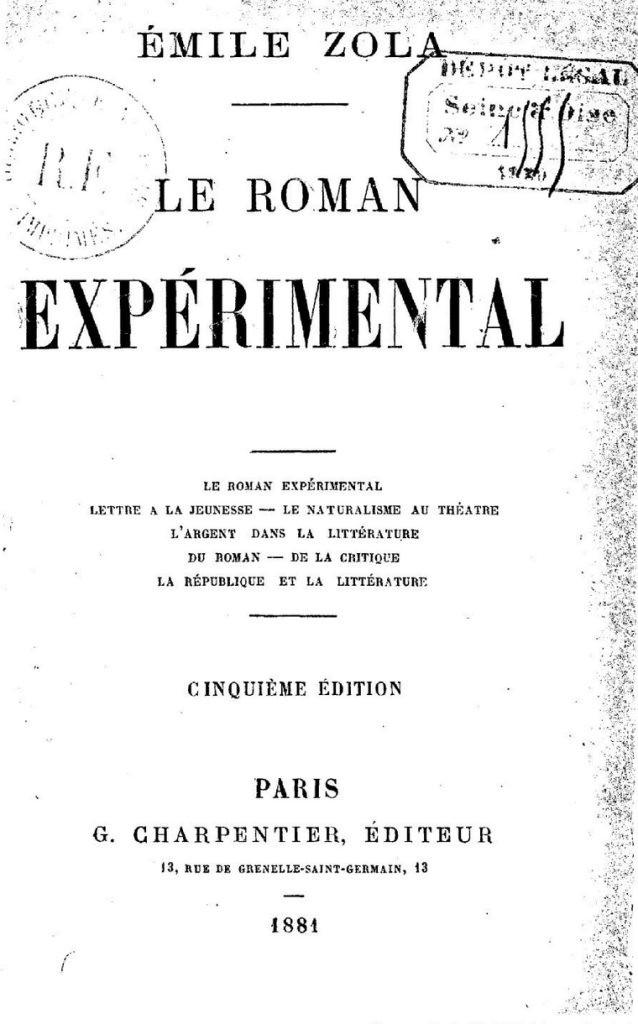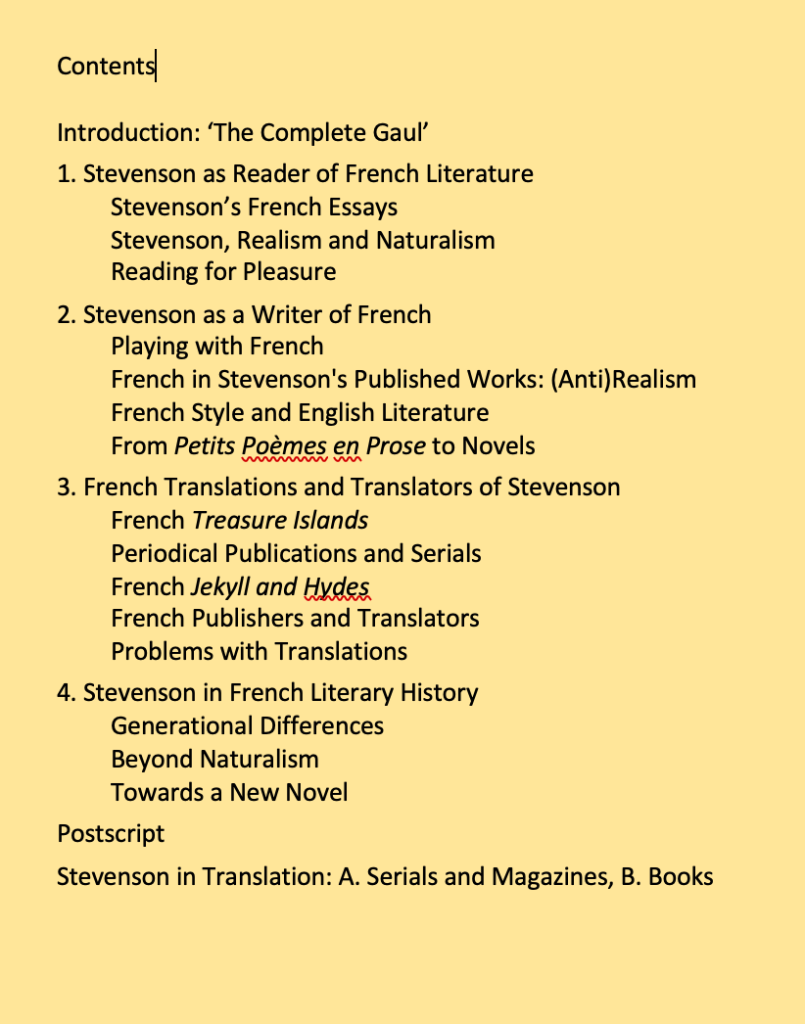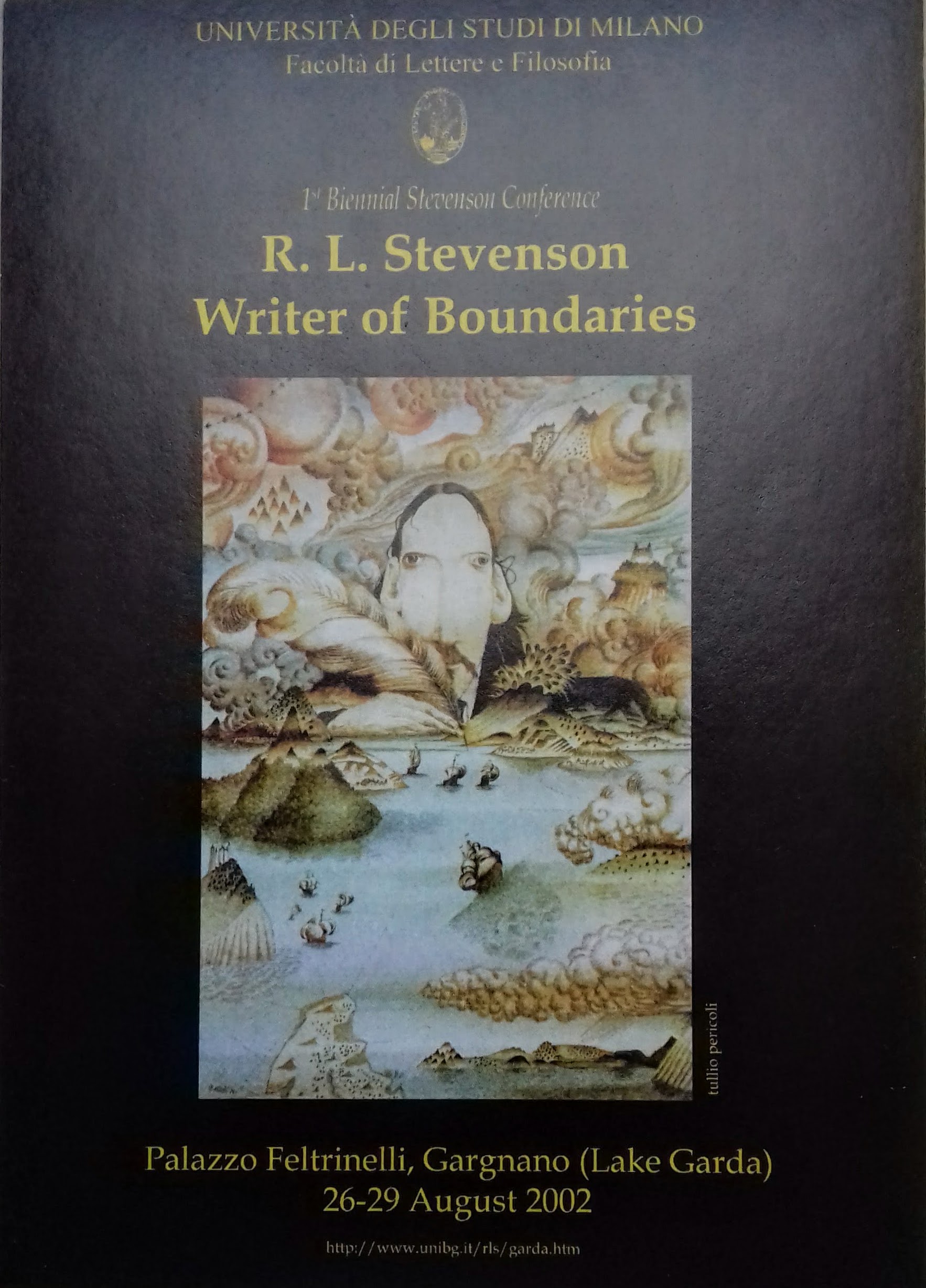Archive for the ‘Reception’ Category
Paul Bourget writes to Stevenson
A post contributed by Katherine Ashley
In 1891, Henry James sent Stevenson a copy of Paul Bourget’s Sensations d’Italie (1891). The book gave Stevenson a ‘literal thrill’ and he quickly requested more of his works. Bourget (1852-1935) was a poet, novelist, and playwright, but today he is mainly read by literary historians for his astute study of fin de siècle cultural malaise, Essais de psychologie contemporaine (1885). He was also, like Stevenson, a traveller, and it is fitting that Stevenson’s introduction to him was via Sensations d’Italie, a book about Bourget’s travels in Tuscany, Umbria and Puglia.
The reasons for Stevenson’s enthusiasm for Sensations d’Italie are explored in an earlier post; a direct result of his reading is that he dedicated Across the Plains (1892) to Bourget.
To Stevenson’s consternation, Bourget did not immediately respond to the compliment. He complained to Sidney Colvin: ‘ain’t it manners in France to acknowledge a dedication? I have never heard a word from le Sieur Bourget, drat his impudence!’. He was even more to the point in a letter to James. Although the tone is good-humoured, there is an element of hurt and annoyance:
I thought Bourget was a friend of yours? And I thought the French were a polite race? He has taken my dedication with a stately silence that has surprised me into apoplexy. Did I go and dedicate my book to the nasty alien, and the ’n’orrid Frenchman, and the Bloody Furrineer? Well, I wouldn’t do it again; and unless his case is susceptible of Explanation, you might perhaps tell him so over the walnuts and the wine, by way of speeding the gay hours. Seriously, I thought my dedication worth a letter.
As it turns out, Bourget’s case was indeed ‘susceptible of Explanation’: work had prevented him from replying. The excuse seems reasonable, since Bourget spent the first months of 1892 in Rome, which resulted in his novel Cosmopolis (1893). He also published two other books around this time, La Terre promise (1892) and Un scrupule (1893).
Bourget’s contrite reply finally came, enclosed in James’s next letter to Stevenson. The manuscript is kept at Harvard University. It is transcribed and translated here.
Londres, le 3 août 93
Monsieur et cher confrère,
Je suis si coupablement en retard avec vous pour vous remercier de la dédicace du beau livre en tête duquel vous avez mis mon nom que je n’en finirais pas de m’en excuser. Le démon de la procrastination—ce mauvais génie de tous les imaginatifs—m’a joué des tours cruels dans ma vie. Il aurait commis le pire de ses méfaits s’il m’avait privé de la précieuse sympathie dont témoignait votre envoi—et venant de l’admirable artiste que vous êtes, cette sympathie m’avait tant touché. Peut-être trouverez-vous le mot de cette énigme de paresse dans une existence qui six mois durant, l’année dernière, a été celle d’un manœuvre littéraire esclavagé par un engagement imprudent—ce qui n’est rien lorsqu’on a le travail // facile, ce qui est beaucoup quand on ne peut pas « faire consciencieusement mauvais » comme disait je ne sais plus qui.
J’aurais voulu aussi, en vous remerciant, vous dire combien j’aime votre faculté et vision psychologique et comme il m’amuse en vous lisant de trouver entre ce que vous exprimez et ce que je sens sur des points analogues de singulières ressemblances d’âme. Croyez que, malgré mon silence, cette fraternité intellectuelle fait de vous un ami éloigné auquel je pense souvent. Je me réjouis de savoir par Henry James que vous avez retrouvé la santé sous le ciel où vous êtes réfugié. Que je voudrais pouvoir espérer qu’un jour nous nous rencontrerons, et que nous pourrons de vive // voix échanger quelques idées et parler des choses que nous aimons également ! Mais vous avez vraiment choisi l’asile presque inaccessible et je songe avec mélancolie que j’ai failli, voici des années, aller frapper à votre porte à Bournemouth. C’était un peu après vous avoir connu intellectuellement, et un autre démon, celui de la défiance, qui fait qu’on recule devant les rencontres les plus désirées, m’en a empêché. Voilà, Monsieur, beaucoup de diableries dans un petit billet qui devrait être toute chaleur et toute joie puisqu’il me permet de vous prouver ma gratitude d’esprit. Recevez-le comme une poignée de main bien sincère et croyez moi votre vrai et dévoué ami d’esprit.
Paul Bourget
Transcription: Katherine Ashley, Antoine Compagnon and Richard Dury
.
London, 3 August 1893
My dear fellow,
I am so shamefully late in thanking you for the dedication to the fine book at the front of which you put my name, that I’ll never be done asking for forgiveness. The demon of procrastination—that evil genie of all creative people—has played cruel tricks in my life. He will have perpetrated his worst mischief if he has deprived me of the precious sympathy demonstrated by your dedication—and coming from the admirable artist that you are, this sympathy has touched me greatly. Perhaps you’ll find an explanation for my mysterious slowness in an existence that for six long months last year was that of literary labour enslaved by unwise commitment—which is nothing when the work comes // easily, but which is much when one cannot ‘in good conscience do bad work’, as someone whose name escapes me once said.
In thanking you, I’d also like to tell you how much I appreciate your abilities and psychological vision, and how it amuses me, when reading you, to find a singular likeness of temperament between what you express and what I feel on analogous points. Know that, despite my silence, this intellectual fraternity makes of you a distant friend of whom I often think. I’m delighted to learn from Henry James that you have regained your health under the skies where you have taken refuge. How I’d like to hope that we’ll meet one day, and that we’ll be able to exchange ideas in // person and speak of things that we both love equally. But you’ve truly chosen an almost inaccessible sanctuary, and I think with wistfulness that years ago I almost knocked on your door in Bournemouth. It was shortly after getting to know you intellectually, and I was prevented by another demon, the demon of no-confidence that makes us back away from the most desired encounters. That, sir, is a lot of devilry for a short note that ought to be all warmth and pleasure, since it allows me to show my gratefulness. Please accept it as a sincere handshake indeed and consider me your true and devoted like-minded friend.
Paul Bourget
Translation: Katherine Ashley
.
See also the former post on Katherine Ashley’s recent study Robert Louis Stevenson and Nineteenth-Century French Literature
.
.
.
.
.
.
RLS and French literature
A post by Katherine Ashley: thoughts on her study Robert Louis Stevenson and Nineteenth-Century French Literature: Literary Relations at the Fin de Siecle (EUP, 2022)
When we look at how Stevenson interpreted French literary history, how he responded to established and emerging theories of the novel in France, and how he devoured both popular and literary French novels, we can also see how all of these things informed his own writing. From the way that he argues against Naturalism in order to reassert the importance of the romance tradition, to the stylistic apprenticeship that he undertook in earnest and in jest, we see an author developing an approach to literature that went against dominant theories of the Victorian realist novel and challenged conceptions of what “the art of fiction” might entail.
To a new generation of French writers, Stevenson became a beacon of change, presenting a pathway out of the perceived dead end that the French novel had run up against.
Naturalism, with its emphasis on scientific positivism, could only take the novel so far; Decadence, with its emphasis on aestheticism, contained the seeds of its own demise. Stevenson, translated and published in popular and highbrow venues, touted as a bestselling children’s author but also as the figurehead of a cosmopolitan revival, showed that readable page-turners could also be stylistic tours-de-force. This reminded French authors and critics that form and style could themselves be part of the intrigue and the adventure of reading and writing.
This study of reciprocal influence reveals much about the literary debates that rocked late-nineteenth-century Britain and France. To retrace the readings and the relationships – both on an individual level (Stevenson) and on a macro level (Franco-British literature) – required wading through nineteenth-century newspapers, journals, correspondence and novels. This might seem dry, but it was brought to life by the ebullient and boisterous personality at the heart of my research. Stevenson’s voice was a reminder that at the end of the day, literary history is in part the history of individuals who valued the imaginative, creative qualities of language and dedicated their lives to it. For Stevenson, being a man of letters sometimes meant “sedulously aping” literary masters, but it also involved play and fun, spontaneity and pleasure. When researching my book, it was Stevenson’s exuberant multilingual outbursts, his hilarious spoofing of contemporary writers and texts, or the silly French lessons like the one he gave to his stepson Lloyd Osbourne that brought the subject and the subject matter to life.
.
.
Twenty years ago today: RLS 2002, Gargnano
Twenty years ago today, on Sunday 25 August 2002, the Gargnano Stevenson conference began with registration from 5 to 7 p.m., followed, on the lakeside terrace, by the first aperitivo and and the first cena (pasta all’amatriciana and ‘àrista al forno’—roast pork—con salsa svizzera) in the gathering dusk of the long Gargnano twilight. It was a memorable moment, in a unique location and one of the events that contributed to the revival of academic interest in Stevenson, including the New Edinburgh Edition.
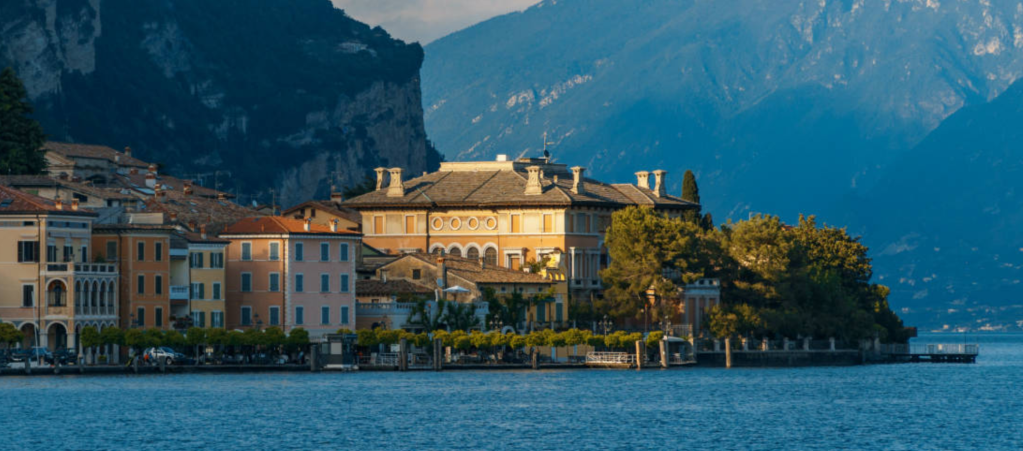
Stevenson, once the most famous and admired writer in English, from about 1918 was gradually excluded for serious consideration by Anglo-American critics. The situation continued for another seventy years: he was dismissed by F. R. Leavis and Raymond Williams and not even mentioned once in The Norton Anthology of English Literature from the first (1962) through to the seventh edition (2000).
Signs of a revival of interest started in the 1980s (with works by Roger Swearingen (1980), Paul Maixner (1981), Barry Menikoff (1984) and the influential collection of essays Dr Jekyll and Mr Hyde After One Hundred Years (1988) edited by Veeder & Hirsch). In the same decade Penguin Classics and Oxford Oxford World Classics paperbacks made a number of Stevenson’s works (including the South Seas tales) easily available for the first time in decades.
With the centenary year of 1994 came exhibitions and biographies and the eight volumes of the Yale Letters (edited by B. A. Booth and E. Mehew), closely followed by Alan Sandison’s monograph of 1996, which presented Stevenson not as the tradition to be overcome by Modernism but as its forerunner.
All this activity and interest was further focussed in the milennial year 2000, associated with overviews and assessments in many fields, including the important Stirling Stevenson conference of 2000 (organized by Rory Watson and Eric Massie), which then gave birth to the Journal of Stevenson Studies (which flourished from 2005 to 2018). Stirling was intended as a single conference, but at its closing meeting Richard Ambrosini boldly stood up and proposed a biennial series, to be established by a conference in two year’s time at the Milan University conference centre on Lake Garda.
What a pleasure it was at Stirling and Gargnano to share interests and enthusiasms with a temporary gathering of like-minded others for the very first time. Stirling initiated a focussing of interest and Gargnano and the biennial conferences confirmed it.
.
Below are some photos of the event. If you wish to read my ‘picturesque notes’ on the conference, you will find them here.
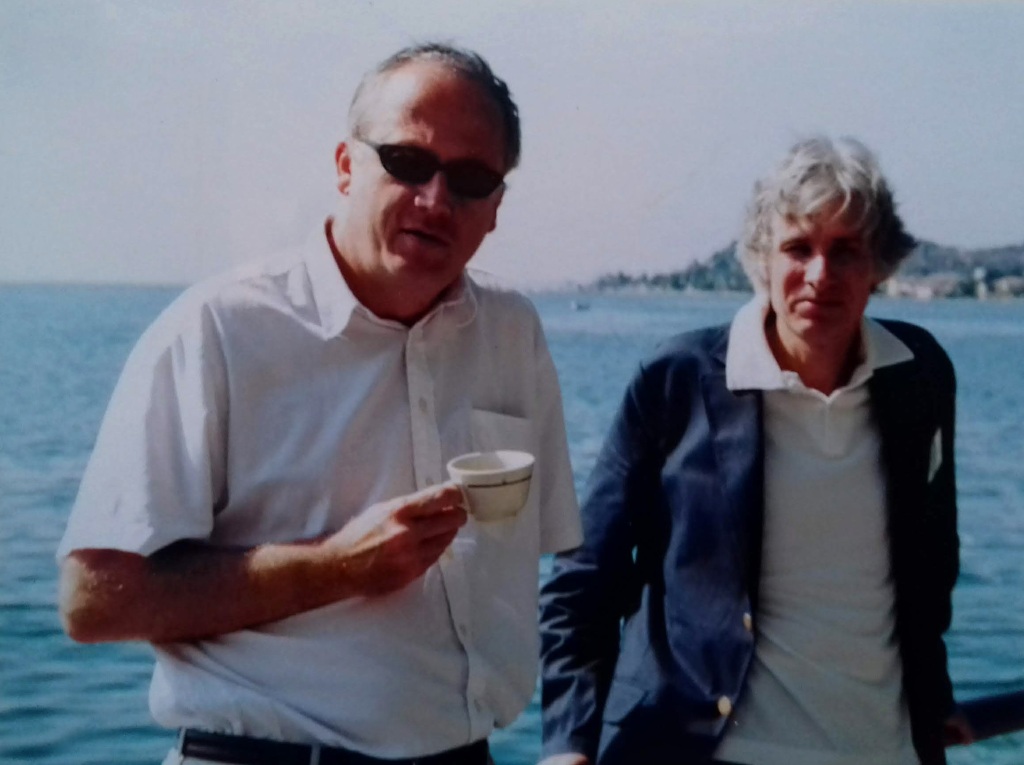

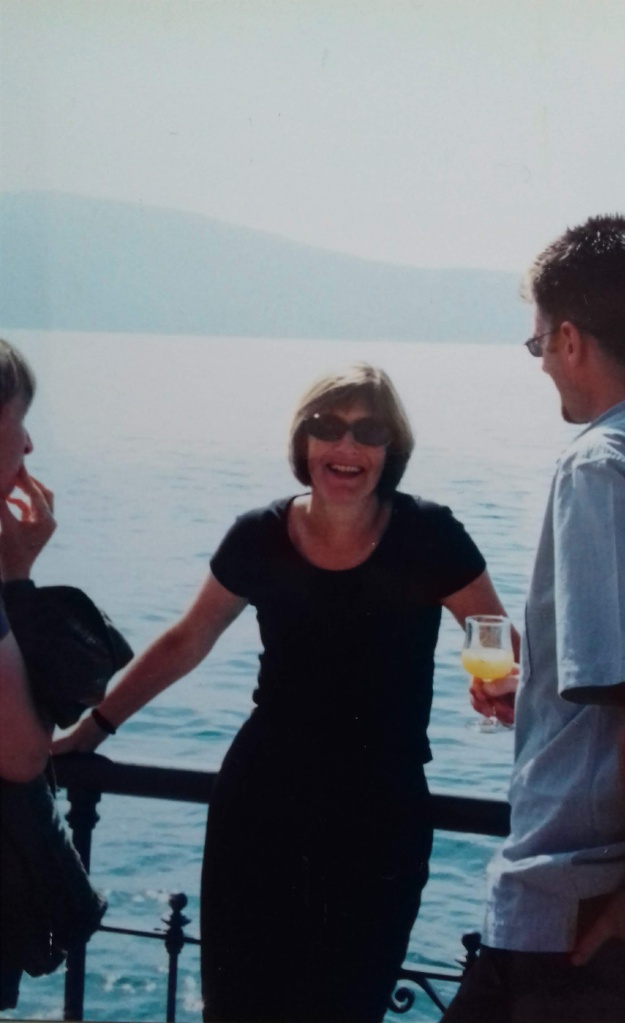


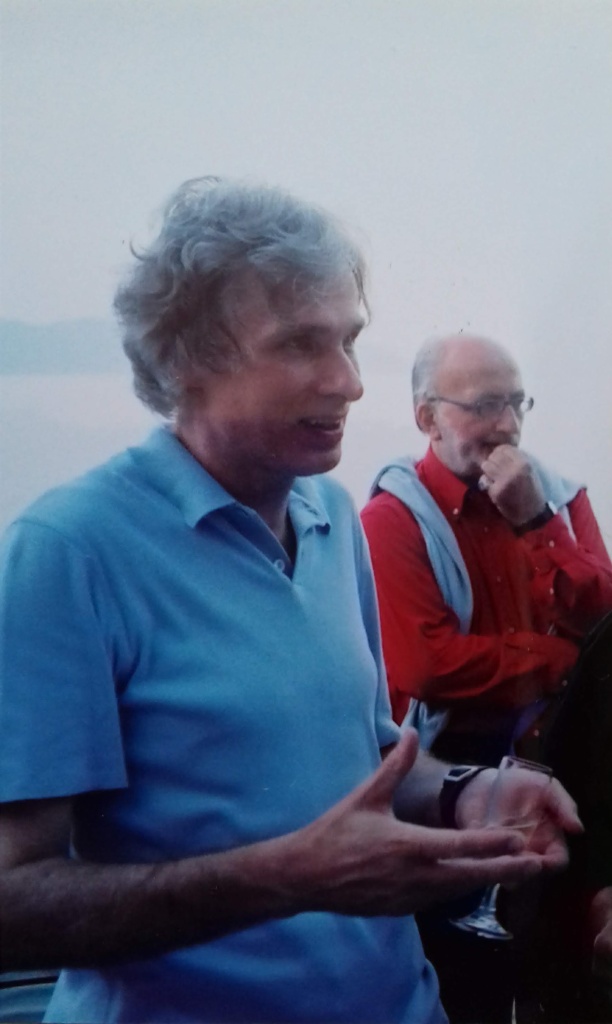





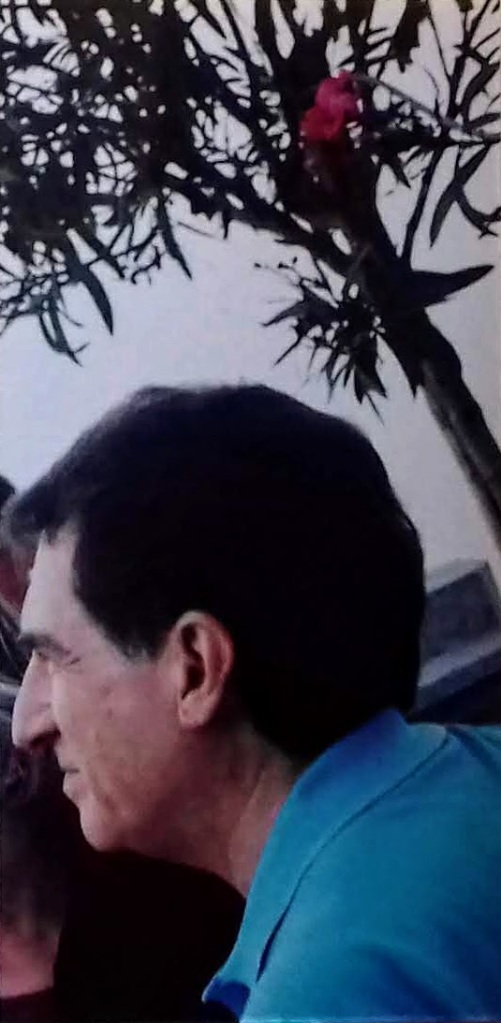


Dick Ringler wrote afterwards: ‘That was quite splendid, long-to-be-savored-and-remembered. A total success. And acquiring—in retrospect—something of the quality of a dream.’
RLS and Graham Greene
A first cousin of Robert Louis Stevenson on his mother’s side, Jane Whytt (1846–1903), was the maternal grandmother of the novelist Graham Greene (1904–1991). He was very conscious of the family connection and in an interview said that he reacted against the writing of Virginia Woolf ‘by being a storyteller. You see, my mother was a cousin to Robert Louis Stevenson and I’d like to think I’ve followed in his tradition’.(1) Leslie A. Fiedler links Greene with Stevenson, Melville and Doyle as writers who begin with ‘the Romance of the incident, the boys’ story or the thriller’, and move towards ‘evocation of myth’.(2)
In 1947 he started work on a biography of Stevenson but abandoned it because J. C. Furnas was working on a substantial biography and reassessment (Voyage to Windward, 1951); his notes for the project are now in the John J. Burns library of Boston College, and his views on Stevenson can be garnered from his Collected Essays.(4)
Re-reading The Third Man
When recently re-reading Graham Greene’s novella The Third Man (1950), written to provide a screenplay for the 1949 film directed by Carol Reed, I was struck by certain elements that reminded me of Robert Louis Stevenson. Apart from the plot bordering on popular genres (of thriller, spy and detective story); the memorable linking of setting and incident; the ambiguity of characters and uncertainty of interpretation of events, there were other elements that stood out as reminiscent.
Prose style. The prose style is different, of course, but what about Greene’s ‘the thin patient snow’ and ‘curious free unformed laughter’ (chs. 2, 8; pp. 21, 56).(3) These seemed like unexpected Stevensonian epithets (such as ‘the deliberate seasons’, ‘the outrageous breakers’).
Duality. Then there was the element of elusive duality in human personality reflected in first and family name: ‘There was always a conflict in Rollo Martins—between the absurd Christian name and the sturdy Dutch […] surname. Rollo looked at every woman that passed, and Martins renounced them for ever’ (ch. 2; p. 18). And later when Martins hesitates to tell the waiting policeman that Harry Lime was escaping from the café where he had been lured by the detective Calloway, it is explained as follows: ‘I suppose it was not Lime, the penicillin racketeer, who was escaping down the street; it was Harry’ (ch. 16; p. 113).
This alignment of personal and public name with behaviour that is instinctive and controlled, or with the personalities that are private and public reminds me of Weir of Hermiston, when Frank Innes says of Archie Weir, ‘I know Weir; but I never met Archie’ (ch. 2), as well as the idea of divided, non-unitary personality in Strange Case of Dr Jekyll and Mr Hyde and elsewhere in Stevenson. Martins, like Jekyll, feels this interior struggle: ‘It needed all Martin’s resolution to stop Rollo saying […]’ (ch. 3; p. 31).
Charming villain. Perhaps Harry Lime (in Greene’s novella and in the interpretation by Orson Welles in the film) owes something to Stevenson’s characters who combine charm and a-morality (Long John Silver and James Durie).
The famous final scene in the film. There was one other thing that rang a Stevensonian bell for me, this time not from Stevenson’s writings but from writings about his life. When Calloway and Martins drive away from the first (fictitious) burial of Lime at the beginning of the story, Calloway notices that Martins does not look back, though he has just taken part in the burial of his friend:
I noticed that Martins never looked behind — it’s nearly always the fake mourners and the fake lovers who take that last look, who wait waving on platforms, instead of clearing quickly out, not looking back. (ch. 2; p. 22)
That note about platforms and ‘not looking back’ reminded me of one of Lloyd Osbourne’s most memorable pieces of writing, which Greene must have known: the final sentences in an essay describing Osbourne and his mother parting from Stevenson at Euston station to return to California in 1878:
I had no idea of the quandary my mother and R. L. S. were in […] I prattled endlessly about ‘going home’, and enjoyed our preparations, while to them that imminent August spelled the knell of everything that made life worth living. But when the time came I had my own tragedy of parting, and the picture lives with me today as clearly as though it were yesterday. We were standing in front of our compartment, and the moment to say good-bye had come. It was terribly short and sudden and final, and before I could almost realize it R. L. S. was walking away down the platform, a diminishing figure in a brown ulster. My eyes followed him hoping that he would look back. But he never turned, and finally disappeared in the crowd. Words cannot express the sense of bereavement, of desolation that suddenly struck at my heart. I knew I would never see him again. (‘Stevenson at Twenty-Eight’; Tusitala Edition, vol. 25, p. x)
This reminds me of the famous last scene in the film, a full minute of one shot: Martins leaning against a wagon in the left foreground as Anna ‘approaches from a great distance, getting progressively closer, and — without so much as a glance in his direction — finally walking past him and out of frame’ (Richard Raskin).
It’s different from the passages from Greene and Osbourne given above (walking away vs walking towards; not looking back vs not looking to one side etc.), but there is an affinity and equivalence in walking down the long platform and walking down the long avenue, in the deep feelings of bereavement preventing any conventional interaction, and in the inexorable marking of an end.
In Greene’s screenplay Rollo and Anna actually decide to drive off together and it was the director Carol Reed who insisted on this striking end (Anna unforgiving, still held by her fatal love for Lime), but it could have been suggested by Greene’s comment about ‘not looking back’.
That makes two levels of supposition: Stevenson at Euston station possibly linked to Greene’s passage about ‘not looking back’ when saying goodbye at a station platform, and this possibly linked to Carol Reed’s choice for the final scene in the film. Mmm, two imagined links could be used to connect almost anything, so let’s forget that possibility. But, just for our own amusement, let’s imagine a long one-minute single shot to conclude an imaginary film: Stevenson turning and walking, walking along the platform till he becomes very small and is lost in the crowd. Add a suitable film score. At the end, steam, released from among the wheels, gradually fills the screen.
- John R. McArthur, Graham Greene: The Last Interview (Brooklyn/London: Melville House, 2019), p. 112.
- ‘R.L.S. Revisited’, No! in Thunder (1960), qu. in Harold Bloom (ed.), Bloom’s Modern Critical Views: Robert Louis Stevenson (Philadelphia: Chelsea House, 2005), p. 14.
- Penguin edition, 1971 and reprints.
- edited by John Maynard, 1969 (available on archive.org).
Dedications to Stevenson
After the post on ‘Stevenson’s dedications to others‘, here are the printed dedications by other to him. These trace a network of friendships and give an idea of his growing repute, while several of them allude to friendship (as in Stevenson’s dedications) and to shared Scottish sentiments. They were appreciated by the recipient; referring to the first from Symonds and Low’s proposed dedication, Stevenson wrote to Low: ‘It is a compliment I value much; I don’t know any that I should prefer’ (L5, 87).
- The first book dedicated to Stevenson was by John Addington Symonds, a friend of many conversations at Davos in the winters of 1880–81 and 1881–2, in his Wine, Women, and Song: Mediæval Latin Students’ Songs (London: Chatto & Windus, 1884). It’s in the form of the letter to a friend, a kind of dedication that if not invented by Stevenson, was developed and popularized by him:

2. The following year brought the a dedication to Stevenson from someone not personally known to him (though they had mutual friends), an American couple who had moved to London: the illustrator Joseph Pennell and his wife the writer Elizabeth Robins Pennell. They dedicated their illustrated account of journey from London to Canterbury on a tandem tricycle: A Canterbury Pilgrimage, ridden, written and illustrated by Joseph and Elizabeth Robins Pennell (London: Seeley, 1885). It is an inscription with something of Stevenson’s charm and graceful phrasing:

(For Stevenson’s letter of thanks, see L5, 121–2.)
3. Another admirer unknown to Stevenson personally was Joseph Gleeson White who dedicated to him his Ballades and Rondeaus, Chants Royal, Sestinas, Villanelles, &c. (London: Walter Scott, 1887). This takes the form of a brief inscription followed by a message, not fully in the form of a letter, but with address directly to Stevenson:

(For Stevenson’s thoughts on whether he deserved such praise, See L5, 370.)
4. The following year Will Low, an old and close friend, dedicated to Stevenson his illustrated edition of Keats’ Lamia (Philadelphia: Lippincott, 1888) within an illustration:

On the thin scroll above the top border is a quotation in Latin from Cicero ‘There is no more sure tie between friends than when they are united in their objects and wishes’. The text of the dedication displayed by an amoretto is: IN TESTIMONY OF LOYAL FRIEND- / SHIP AND OF A COMMON FAITH IN / DOVBTFVL TALES FROM FAERY LAND, / I DEDICATE TO / ROBERT LOVIS STEVENSON / MY WORK IN THIS BOOK : WHL
The use of ‘doubtful’ to mean (probably) ‘open to many interpretations’ (a meaning not found in the OED) is influenced by a use of French douteux; it imitates Stevenson’s own use of epithets and Gallicisms, creating new meaning through the context of use.
In Stevenson’s copy, sold 1914 (now at Brown University) Low, in 1928, added a long note to the flyleaf, in which he says it was
a book which held for Stevenson and myself more than the text, more than the drawings, would imply. The common faith “in doubtful tales from fairyland”, was more than a form of words it was the basis of our friendship.
Stevenson wrote to Low thanking him for ‘the handsome and apt words of the dedication (L5, 62–3) and sent him a poem in thanks (‘Youth now flees on feathered foot’, L5, 164)
5. The same year brought a dedication on a work of visual art, the gilded copper plaque by Augustus Saint-Gaudens, Robert Louis Stevenson, in the first version (1888):

The panel includes Stevenson’s poem ‘To Will H. Low’ above Stevenson’s lifted hand holding a pencil, and in the top right-hand corner the dedication: TO ROBERT LOUIS STEVENSON / FROM HIS FRIEND AUGUSTUS / SAINT-GAUDENS. The bond of friendship (here, between three friends) is again specifically mentioned, as in many of Stevenson’s own dedications to others.
6. In 1891 Marcel Schwob dedicated to him his Cœur double (Paris: Ollendorff) with the the simple inscription: A / ROBERT LOUIS STEVENSON. But in the presentation copy he sent to Stevenson he added the following in English below:
To Robert Louis Stevenson this book is dedicated in admiration of ‘Treasure Island’, ‘Kidnapped’, ‘The Master of Ballantrae’, in the name of the new shape he has given to the romance, for the sake of our dear Francis Villon — Marcel Schwob.
7. In 1892 the critic George Saintsbury, fellow Savile Club member, dedicated to Stevenson his edition of The Essays of Montaigne Done into English by John Florio (London: David Nutt), with another simple inscription:

The ‘contrivers’ included W. E. Henley, general editor of The Tudor Translations series of which this was one. Henley’s original idea had been to dedicate it to ‘To the R.L.S. of Virginibus Puerisque, Memories & Portraits, Across the Plains’ (letter to Baxter, 4 May 1892; Yale, B 4633), associating the volume of Montaigne specifically with Stevenson the essayist (possibly also intended as the early Stevenson, from in the period when they had both been close friends). Perhaps Saintsbury, the austere critic, did not approve the association of Stevenson the essayist with the acknowledged master of the genre; for whatever reason, the resultant dedication seems strangely unbalanced.
8. The same year Alan Walters dedicated to Stevenson his Palms & Pearls; or: Scenes in Ceylon (London: Richard Bentley & Son, 1892). Walters, clearly trying too hard, produced an elaborate classical-style inscription:

9. A classical inscription, but in contrast concise and densely poetic, was also chosen by S. R. Crockett for his dedication to The Stickit Minister (London: Fisher Unwin, 1893):

Stevenson was touched by this evocation of the hills of Galloway (seen on his ‘Winter’s Walk’ in January 1876), while ‘the graves of the martyrs’ made him think instead of Allermuir close to Swanston (familiar from his student days and through his early career) (L8, 159, 193–4). It inspired him to write a poem (later included in the posthumous Songs of Travel of 1895) and include it in the letter of thanks to Crocket (L8, 152–4). The first of the three stanzas is: ‘Blows the wind today, and the sun and the rain are flying, / Blows the wind on the moors today and now, / Where about the graves of the martyrs the whaups are crying, / My heart remembers how!’ The last line of this first stanza then inspired Crocket to change the last line of his dedication in future editions so that it echoed Stevenson’s poem:

In addition to the changed last line to the Dedication, the ‘second edition’ (1894) has a ‘Letter Declaratory’ beginning ‘Dear Louis Stevenson’ modeled on Stevenson’s own elegant dedicatory letters, preceded, on the page facing the dedication, by a facsimile of Stevenson’s MS poem and a transcription of it .
10. The last dedication to Stevenson was a dedicatory poem in Scots by his friend Andrew Lang in The Secret Commonwealth of Elves, Fauns and Fairies, ed. by Robert Kirk and Andrew Lang (London: David Nutt, 1893). This addresses ‘Louis’ in a far land where the inhabitants know nothing of Scottish religion (self-mockingly presented) but have many supernatural tales, and encourages him to tell them Scottish supernatural tales, which ‘stamped wi’ TUSITALA’S name / They’ll a’ receive them’ and ends with the world-weary poet wishing himself to be taken away by the fairies. Here is the first of the seven verses:

RLS in the Spectator
The following post is contributed by Lesley Graham, editor of Uncollected Essays 2
Spectator archive
The full Spectator archive has just become available online. http://archive.spectator.co.uk/. I did a quick search for “Robert Louis Stevenson” and came up a number of interesting items, including the following.
22 December 1894, p. 875
On Monday, a Reuter’s telegram from Auckland announced the death of Mr Robert Louis Stevenson
[…] We have dealt elsewhere with Mr. Stevenson’s contribution to literature, and will only say here that, in spite of the extraordinary charm and vividness of his romances, and of his power of humour, his work as an essayist far more nearly approaches the ideal standard than his achievement in the field of fiction. […]
*
22 December 1894, pp. 881-82
ROBERT LOUIS STEVENSON
[clearly written before the announcement of Stevenson’s death]
WHAT is it that makes Mr. Stevenson’s literary work never wholly satisfying ? What is the something in which his books fail to content, even when they most excite, the emotions ? His romances are full of charm and of fascination. Nothing could be more vivid or more taking. The art is perfect, and dullness is banished from his page. And yet as one reads there grows the sense of some latent imperfection, some intangible fault of commission or omission which perplexes and astonishes. What can it be? Whence comes this sense that in the last resort we are cheated of the full glory of letters? [First paragraph of a longer article]
*
20 MAY 1911, p. 761
“Opinionettes”
STEVENSON coined the word ” opinionettes’ when he was twenty-one, and applied it to the obstinate little conclusions which the Edinburgh University students brought with them to college. [We quote the word from a small volume lately brought out by Messrs. Chatto and Winans (Lay Morals [and other papers], by R. L. Stevenson, 6s.) which with other matter reprints some of his earliest essays.) [First paragraph of a longer article, discussing the 1871 Edinburgh University Magazine essays and ‘Lay Morals’]
*
9 August 1934, p. 202
Gramophone Notes
SCHUMANN’S music, like the writing of Robert Louis Stevenson, suffers today from that kind of neglect which does not often permit us to make any effort to study it, even though, when by some chance we do, we seldom fail to find enjoyment in it. Stevenson’s neglect (except in schools, where the little innocents, unaffected by literary fashion, are still offered up to his cult) is probably the more general, because there is no literary substitute for a new set of gramophone records to provide the necessary incentive. So Stevenson remains unread, while a new recording of the Third Symphony —an excellent one, by Piero Coppola and L’Orchestre de la Societe des Concerts du Conservatoire (H.M.V. DB 4926-8, 18s.)—makes us turn our attention once more to Schumann….
*
26 January 1974, Page 5
Letter
Sir: Inevitable misprints apart, exactitude is almost everything. Mr Benny Green in his review on January 5 of Professor Daiches’s Robert Louis Stevenson and His World, refers to Stevenson’s use of the word ‘horologist’ in Markheim, where what Stevenson said was — “and now, and by his act, that piece of life had been arrested, as the horologist, with interjected finger, arrests the beating of the clock.”
This sentence, I suggest, is an instance of a skill which — whatever differing views there may be about its worth — Stevenson developed to a high degree and over a wide range. I can only call it an onomatopoeia not of sound alone, but of sight, action and process as well.
The quoted sentence, especially in its context, suggests the regular rhythm of a pendulum and escapement brought abruptly to a stop. (Was ‘horologist’ quite so antique a word in even Crane’s time?) “. . in my precipitous city” (dedication to Hermiston) and “wilderness of tumbled boulders” (Fontainebleau) picture in sharp or rounded vowels the scenes which they describe. The “brutal instant of extinction” (Hermiston) tells the jerking fall of a hanged man. “The sea bombards their founded towers” marks out the surges which still, as then, wash against the Bill Rock and Skerryvole. “The rain erases and the rust consumes” the inscriptions and fittings of a family tomb.
One cannot deny that there is much in the criticism of Stevenson’s use of antique words, but it is not the whole story.
W. H. McCulloch
2 Trinity Grove, Edinburgh
Essays Top Ten
A bit of trivia.
As part of the essays edition we have logged the essays in all the anthologies with an essay by RLS that we could find (66 so far), so that we can get an idea of what were the popular or typical essays in various periods. Here are some results:
Ten most anthologized RLS essays to 1949
1. Aes Triplex
2. An Apology for Idlers
3. Truth of Intercourse
4. Books Which Have Influenced Me
5. On Falling in Love
6. Pulvis et Umbra
7. Walking Tours
8. Virginibus Puerisque [I]
9. The Morality of the Profession of Letters
10. Child’s Play
Seven of the top ten from one collection: Virginibus Puerisque!
Ten most anthologized RLS essays from 1950
1. A Gossip on Romance (^)
2. An Apology for Idlers (=)
3. Books Which Have Influenced Me (^)
4. A Note on Realism (new entry)
5. The Lantern-Bearers (new entry)
6. A Humble Remonstrance (new entry)
7. The Morality of the Profession of Letters (^)
8. A Chapter on Dreams (new entry)
9. On Style in Literature: Its Technical Elements (new entry)
10. A Penny Plain and Twopence Coloured (new entry)
‘Idlers’ the only VP title still in the top ten; new entries mainly about literature and the imagination.
Colvin and the Edinburgh Edition
In the Beinecke Library (GEN MSS 664 box 51, B 7273) there is an interesting undated document signed by ‘H.D. Nash’ headed ‘Stevenson’s Fables’ with a blue-pencil note at the top ‘Opinion I’ initialled CN (though the second letter is smudged and it might not be ‘N’).
Nash had been shown the Fables and asked if they should be published. His first reaction, he says, would be to publish,
were it not for the information given me as to the severely (though no doubt properly) critical spirit in which the selection of his works for republication in a permanent form is being made.
He then goes on to appraise some of the fables (referring to them by Roman numeral) and ends
On the whole, though it might be too much to say these fables would “detract from his reputation”, I should be disposed myself to exclude it from a collection which is to contain only Stevenson’s best work.
The Fables were first published in 1896 in an edition with Dr Jekyll and Mr Hyde and they were included in vol 22 of the Edinburgh Edition published in 1897.
What is interesting about the letter are the comments about the intended ‘severely critical spirit’ of the selection of only Stevenson’s best work. It does seem at first sight to be correspondence concerning the Edinburgh Edition.
Does anyone know anything about H.D. Nash?
